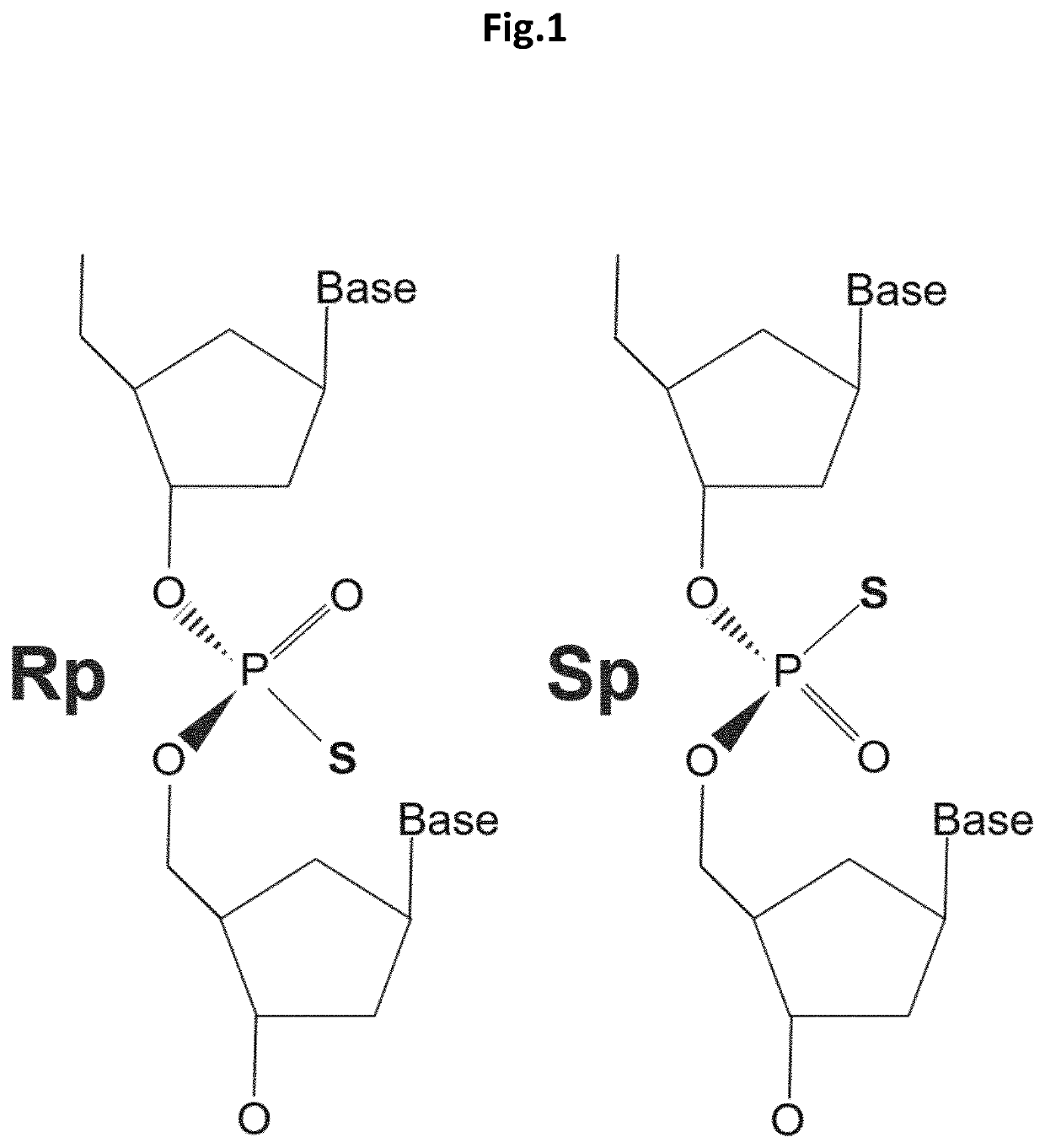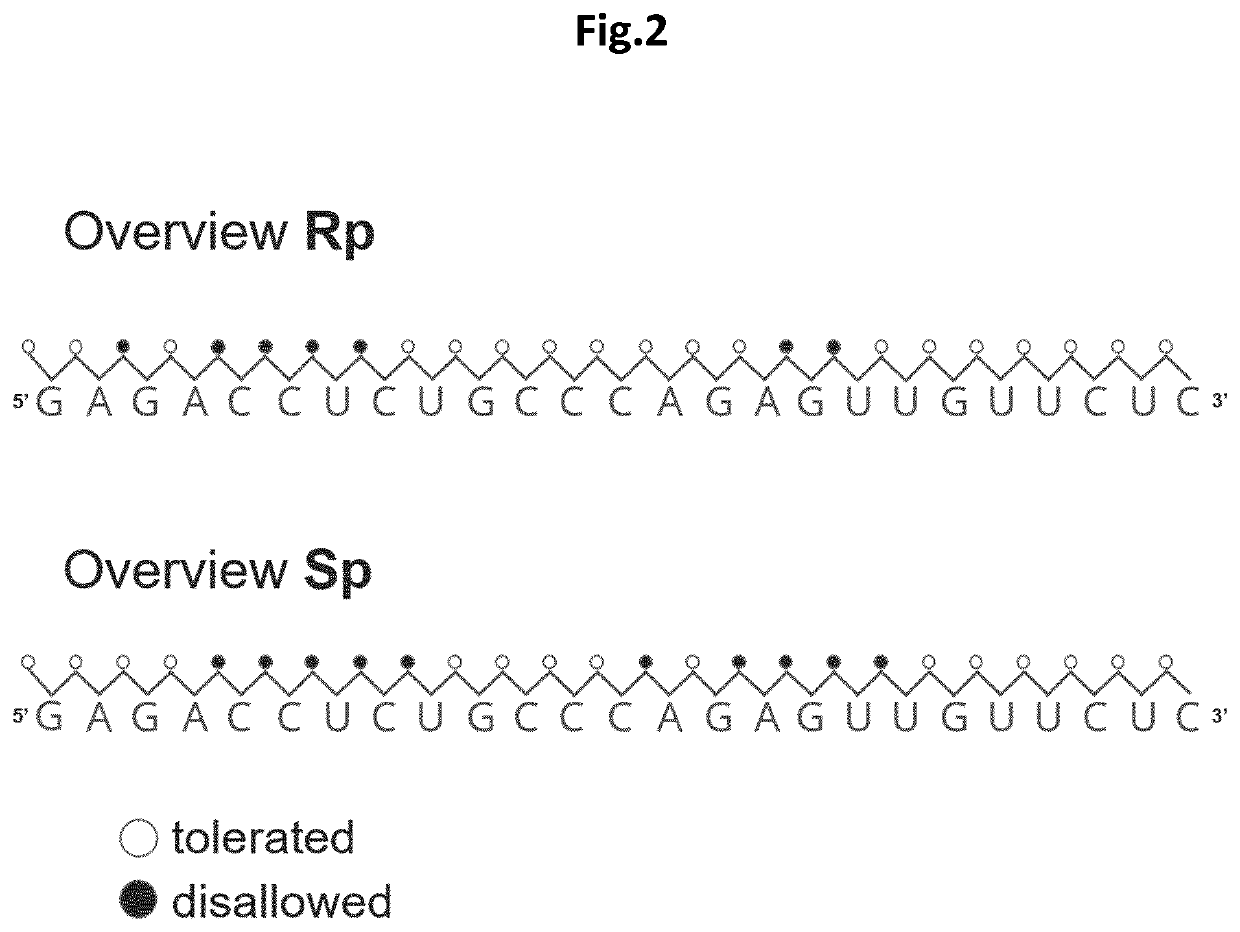Stereospecific linkages in RNA editing oligonucleotides
a technology of oligonucleotides and rna, applied in the field of medicine, can solve the problems of long therapeutic application time, system suffers from similar drawbacks, and is not readily adaptable to human us
- Summary
- Abstract
- Description
- Claims
- Application Information
AI Technical Summary
Benefits of technology
Problems solved by technology
Method used
Image
Examples
example 1
Single-Stranded Antisense Editing Oligonucleotides Based on Computational Modeling
[0085]The inventors of the present invention envisioned that modeling data could possibly support the identification of structural features that could be incorporated into editing oligonucleotides (EONs) to improve (or to increase the efficiency of) editing of target RNA. The suboptimal sequence context was addressed by chemically modifying the nucleotides of the EONs so as to avoid steric hindrances with ADAR, and even to provide a more efficient recruitment of the protein. To guide this process, the existing RNA-bound ADAR2 structures were used as a starting point (the structural template). The published structure of the ADAR2 deaminase domain in interaction with a double-stranded RNA (Matthews et al., Nature Structural and Molecular Biology, 2016) was analysed and a network of intra and intermolecular distances required for new structure calculations was generated. For the intra and intermolecular d...
example 2
Silico Modelled EONs in RNA Editing
[0086]As outlined above, a pattern of allowable and non-allowable stereospecific phosphorothioate configuration modifications was determined and to further substantiate this in an RNA editing experiment, an enzymatic assay is performed to validate the method experimentally. The procedure of these Hurler syndrome model experiments is as described in WO 2017 / 220751. In a first experiment, a number of EONs carrying modifications at various positions are tested. In a second experiment, stereospecific phosphorothioate Rp and / or Sp modifications are integrated at specific positions in the EONs in agreement with the atomic scale modelling results as outlined herein. After transfection of the oligonucleotides in MEF cells overexpressing an altered Idua gene with a premature termination codon (W392X), the α-L-iduronidase (the protein encoded by the Idua gene) enzymatic activity is quantified relative to multiple controls. Binding of EONs to their RNA target...
PUM
| Property | Measurement | Unit |
|---|---|---|
| Length | aaaaa | aaaaa |
| Composition | aaaaa | aaaaa |
| Efficiency | aaaaa | aaaaa |
Abstract
Description
Claims
Application Information
 Login to View More
Login to View More - R&D
- Intellectual Property
- Life Sciences
- Materials
- Tech Scout
- Unparalleled Data Quality
- Higher Quality Content
- 60% Fewer Hallucinations
Browse by: Latest US Patents, China's latest patents, Technical Efficacy Thesaurus, Application Domain, Technology Topic, Popular Technical Reports.
© 2025 PatSnap. All rights reserved.Legal|Privacy policy|Modern Slavery Act Transparency Statement|Sitemap|About US| Contact US: help@patsnap.com



